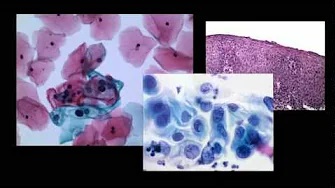Document Type
Article
Publication Date
12-2020
Abstract
Breast tall cell carcinoma with reversed polarity (TCCRP) is rare and previously referred to as solid papillary carcinoma with reverse polarity. This low grade tumor commonly exhibits IDH2 p.Arg172 mutation, however is not completely understood at the molecular level. We present a case of TCCRP in a 55 year old woman with a 0.7 cm left breast mass. A core biopsy was performed with immunohistochemistry. Lumpectomy and sentinel lymph node biopsy were completed two months later. MammaPrint R© and BluePrint R© gene expression profilers were performed on an excision block. Microscopically, the tumor was composed of circumscribed nests of columnar cells, with focal papillary architecture. Tumor cells had apically located nuclei with grooves and rare inclusions. Tumor cells were positive for CK5, IDH1/2, and calretinin, and myoepithelial cells were absent. BluePrint R© subtyped the tumor as basaloid. MammaPrint R© classified the tumor as high risk for metastasis. TCCRP presents a diagnostic challenge. Although these rare breast carcinomas are generally reported to have an indolent clinical course, molecular analysis by gene expression profiling classified this tumor as high risk of recurrence with a basaloid type. Therefore, molecular analysis of this tumor may lead to conflicting data regarding prognosis and treatment considerations. Clinicians and patients should weigh published data and individual prognostic information for treatment planning. Our patient and clinical team opted for radiation without chemotherapy. More cases of TCCRP need to be studied to better understand its molecular profile.
Recommended Citation
Kaitlyn J Nielson∗1, Edgar G. Fischer1, Jacklyn Nemunaitis2, Sangeetha Prabhakaran3, Nadja K. Falk1 1Department of Pathology, University of New Mexico, Albuquerque, New Mexico, USA 2Department of Internal Medicine, Division of Hematology/Oncology, University of New Mexico, Albuquerque, New Mexico, USA 3Department of Surgery, Division of Surgical Oncology, University of New Mexico, Albuquerque, New Mexico, US

